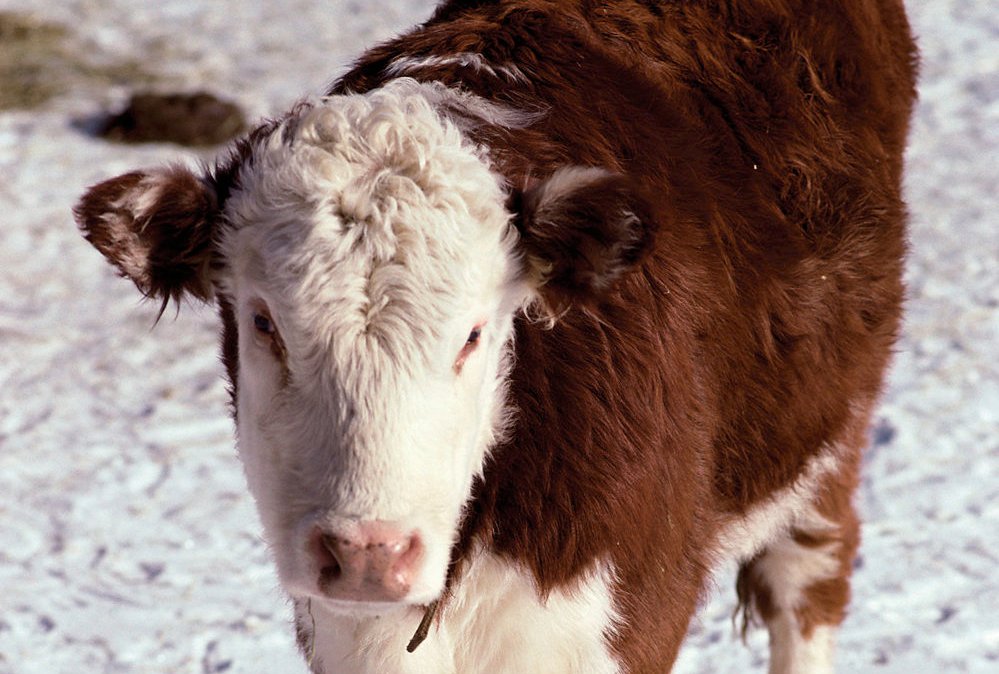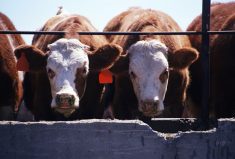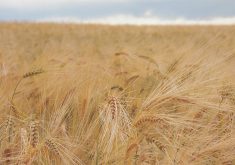Compared to last week, western Canadian feeder cattle markets traded $3-$4 on either side of unchanged. Southern Alberta experienced severe wind and dust storms last week which softened buying interest from a large portion of feedlot operators. At the same time, grass conditions are quite variable across the Prairies despite the recent precipitation. Cooler temperatures have delayed pasture development as forage and hay supplies are historically tight.
Ranchers are also reporting higher than expected calf deathloss due to below normal temperatures. Finally, calves are being sold sooner than expected while cow culling rates are higher than normal. Western Canadian feedlot placements have been running 10-12 per cent above year-ago levels. Demand for grass cattle has been limited; therefore, calves are moving directly into finishing feedlots. The small farmer-cattle producer has memories of last year’s drought and is not willing to take on additional risk.
Read Also

Feed Grains Weekly: Good export demand pushing up domestic prices
Prices for feed barley and wheat have been trending higher lately, said analyst Jerry Klassen of Resilient Capital in Winnipeg.
In central Alberta, larger-frame Angus-blended steers with lean butter with full health records on small grain diet averaging 840 lbs. sold for $190; similar quality heifers weighing 775 lbs. were valued at $177. Northwest of Winnipeg, larger-frame black steers with medium flesh weighing 881 lbs. were valued at $185. Near Lethbridge, mixed steers with Simmental frame weighing 890 lbs. were valued at $186 and similar-quality and -weight heifers were quoted at $167.
Southeast of Saskatoon, black steers with Limousin qualities carrying lower flesh levels weighing 715 lbs. were quoted at $215 and similar-quality heifers weighing 655 lbs. were reported at $183. Southeast of Calgary, larger-frame tan steers averaging 660 lbs. were valued at $221 landed in the feedlot and Hereford-blended heifers weighing just over 600 lbs. were quoted at $193. In southern Manitoba, Charolais-based steers weighing 620 lbs. sold for $237 and similar-quality heifers weighing 575 lbs. were quoted at $199.
Calves under 600 lbs. were quite variable. The scarcity principle is coming into play on these lighter weight categories. North of Neepawa, Man., black steers weighing 450 lbs. sold for an astonishing $265. South of Edmonton, tan steers averaging 490 lbs. were valued at $248.
The feeder cattle market has a strong seasonal tendency to rally from May through July. We’re looking for a recovery in barley production this year. The trend in weather has been cool and wet. There is a high probability that we’ll see six million to eight million tonnes of actual feed wheat production due to adverse weather during harvest. The larger feed grain crop in Canada is coming at a time when the feeder market needs to encourage heifer retention.
— Jerry Klassen is president and founder of Resilient Capital, specializing in proprietary commodity futures trading and market analysis. Jerry consults with feedlots on risk management and writes a weekly cattle market commentary. He can be reached at 204-504-8339 or via his website at ResilCapital.com.
















